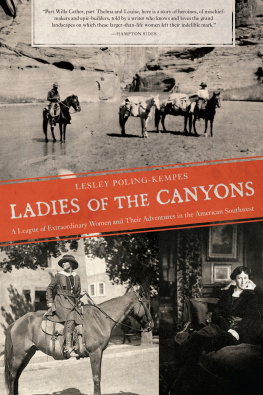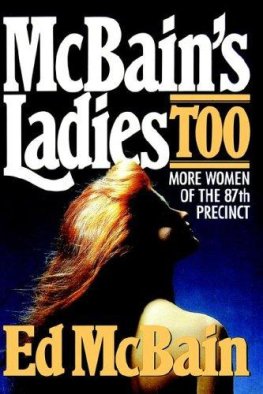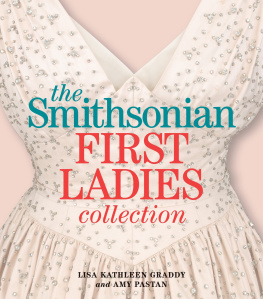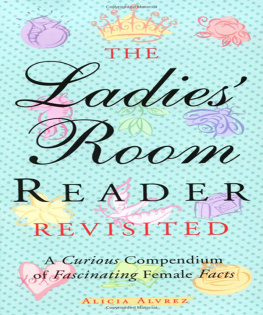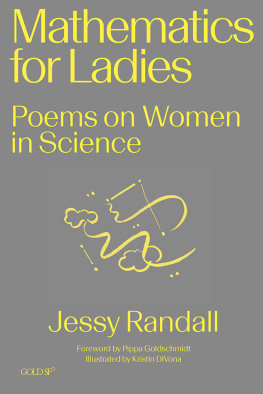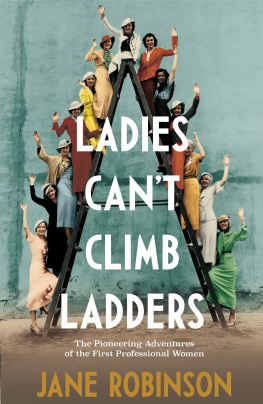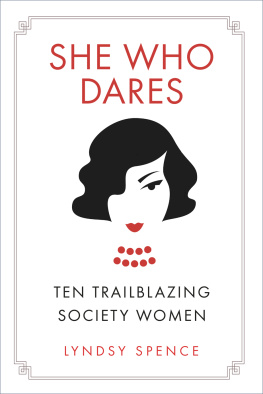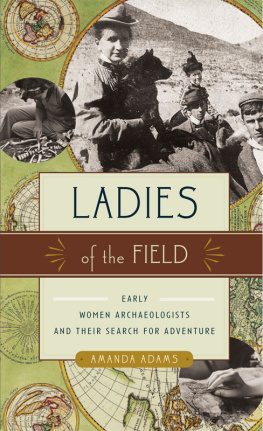AFTERWORD
Something of the Spirit
Here is the desert of silence, Blinking and blind in the sunAn old, old woman whomumbles her beads And crumbles to stone.
Alice Corbin
MARY WHEELWRIGHT AND ALICE KLAUBER both lived to see their eightieth birthday. Marysprimary residence remained in the Northeast among the Brahmins, but even as sheaged, she continued to make an annual pilgrimage to Los Luceros on the Rio Grande.Her last visit was in May 1958, just two months before she died.
Alice, however, did not go back to New Mexico again after Natalies death in Parisin October 1921. Following three years of a self-imposed European exile, she returnedto San Diego in late 1924. She was in her mid-fifties, and after years of livingout of steamer trunks in hotels and rented rooms in foreign places, Alice was readyto settle down in the ocean-side community that had been her home since birth.
Before she embarked for Paris and the meeting of the International Congress of ArtHistory at the Sorbonne, Alice and a small group of San Diego artists had foundedFriends of Art, a society of like-minded creative people who shared the idea thatthe real status of the community is measured not alone by its commercial achievements,laudable as they may be, but by the things which make for culture. By the timeof Alices return to California from Europe in the mid-1920s, discussions about thebuilding of an art museum in San Diego had become formalized, and Friends of Arthad merged with the Art Guild of San Diego. Alice and other members of the renamedFine Arts Society became the directors of San Diegos first fine art museum. Whilethe new museum was under construction, the directors meetings were held in the NewMexico Building at Balboa Park, a place whose rooms held the echoes and memoriesof a dozen of Alices closest friends, including Natalie.
Alice was not just a founding member of the Fine Arts Gallery of San Diego (laterrenamed the Museum of Art), she was a major donor, and also served as the museumsfirst curator. Her personal art collection given to the museum over several decadesreflected her remarkable life among some of the most influential and important artistsof her time. After visiting Japan in the 1930s, Alice also became an avid collectorof and authority on Asian art. In 1935, with her friend Elsie Kimberley, she createdSan Diegos Asian Arts Committee, and in the ensuing years her collection of Japanesewoodblock prints, Persian miniature paintings, and rare Chinese porcelains becamethe nucleus of the San Diego Museums Oriental art collection.
In her sixties Alice was teaching art to children and adults, and comfortably assumedthe role of San Diegos first lady of the arts. But beneath the civic dynamo andcelebrated matron of the local arts, the skilled and serious painter persisted andcontinued to seek the nourishment found in her private studio among her paints andcanvases. Alices paintings appeared regularly in exhibitions at the San Diego Museumof Art and were exhibited at the California Pacific International Exposition in 1935.
By the time of her death in her bed in Lemon Grove, California, in early July 1951,Alice was an important and respected member of the Southern California fine art community.But she was unknown in the American art world. Although her teachers and advocatesincluded many of the most prestigious artists of her time, Alice never sought fameor expected recognition as a painter. Hardly surprising, as she was often apologeticabout her passion to paint, and rarely if ever used the term artist to describeherself. Indeed, the time and society into which Alice was born hardly encourageda woman to make such a bold and self-affirming declaration, or to entertain the pursuitof such an identity. Locally her social activities seemed more newsworthy than herachievements as an artist, one art historian wrote of Alice, if a paucity of newspaperaccounts is considered any criteria.
In spite of the prevailing climate of expectation that urged women to stay home andconcern themselves with domestic matters, Alice traveled to exotic and often challengingdestinations in pursuit of her muse. However, her travel journals, diaries, and survivingletters offer only cryptic and abbreviated references to her own work and rarelyshed light on her private thoughts or opinions about her irrepressibly independentspirit. Natalie was the rare friend with whom Alice discussed the challenges andconflicts endured by women artists, and Natalies death left her with few women friendswho personally understood the dilemmas of the creative modern woman.
Like Natalie, Carol, Mary, and their spirited female contemporaries in the earlytwentieth century, Alice was a New Woman not so much by sociopolitical choice asby disposition and circumstance. Alices poems leave a few veiled clues to her feelingsabout life as a single woman and an artist. The poem aptly titled Untitled perhapssums up her acceptance of her place in the world.
The least of His reporters I
Who take some small note from His sky and
let the Universepass by.
Mary Wheelwright died in her own bed in her summerhouse, the White Hen, on SuttonIsland, near Mount Desert, Maine, in July 1958. She was eighty years of age and,like Alice, was vigorous and sharp-minded until the end of her life. Mary knew herdeath was nearshed been told by her doctor that she had serious heart trouble.On her last day of life, she spent the morning in her garden. The White Hen facedwest and had a fine view of the sea. After a good lunch, Mary retired to her roomto read. With her book in her hand, she dozed off into a sleep from which she neverawoke.
Two of Marys cousins, sisters Aimee and Rosamond Lamb of Boston, were visiting SuttonIsland that day, and they watched in silence as the undertaker carried Marys bodyon a stretcher out of the summerhouse and down to a small rowboat tied to the dock.The sisters placed flowers on the canvas-wrapped body and said their farewells bythe water.
Sutton Island was famous for its fog, and that afternoon the Lamb sisters stood withMarys bereft house staff and watched as the little boat carrying her body was rowedout into the mist. It was really just what she would have liked, Rosamond saidyears later. Could anything be more appropriate for Mary than just to go out intothe void like that, into the deep fog, just by herself in a boat.
Marys body was buried among the Brahmins in the family cemetery in Boston, butif her Indian friends and their beliefs held sway over her spirit, Marys soul wasfar away on the Rainbow Trail.
A memorial service was held for Mary Cabot Wheelwright in Santa Fe at the Museumof Navajo Ceremonial Art. Oliver La Farge, whose novel about the Navajo people, LaughingBoy, won the Pulitzer Prize in 1930, recalled the obstacles that Mary and Klah hadovercome to make the museum a reality. Marys unscientific methods, La Farge toldthe audience, were ultimately responsible for the preservation of extraordinary andirreplaceable materials. La Farge praised Mary and her ability to study and respondto a very remarkable primitive religion as a whole instead of approaching it onlyfrom the rather timid point of view of the anthropologist seeking his purely so calledobjective data.
The memorial concluded with a written statement from the Navajo tribal chairman,Paul Jones. It is certainly most unusual and difficult for a museum to achieve thepurpose of keeping alive something of the spirit of the religion of the people whonever had a written language.... The Navajo people will be forever grateful to[Mary] for... building the thing of the spirit into visible and physical formin the Museum of Navajo Ceremonial Art.

